Goldador Guide: Is This Golden Retriever / Labrador Mix Right for You?
Get answers to your Golden Retriever + Labrador Retriever mix questions on characteristics, temperament, history, and health with this guide.
Get answers to your Golden Retriever + Labrador Retriever mix questions on characteristics, temperament, history, and health with this guide.
by Kelly Villa, | March 7, 2025

Penny Britt / AdobeStock
Get ready to fall in love with the Goldador, also known as a Golden Labrador. This popular Labrador mix pairs the bounding friendliness of the Golden Retriever with the steady, devoted companionship of the Labrador Retriever. The result is a medium- to large-sized dog with a water-resistant coat (helpful when swimming, which they often love), bright, intelligent eyes, keen sociability, and a desire to please. Read on for everything you need to know about this kind-hearted dog.
Breed type: Crossbreed
Coat: Double
Hypoallergenic: No, they will likely trigger allergies.
Temperament: Friendly, gentle, intelligent, loyal
Lifespan: 10 to 15 years
Size: Large - 40 to 80 pounds

Penny Britt / iStock
A Goldador is a mixed breed resulting from the crossing of a Golden Retriever and a Labrador Retriever. These dogs often exhibit a charming mixture of traits from both breeds, featuring fur that spans from light golden to dark brown, a dense double coat, floppy ears, and a long, fluffy tail.
A Goldador’s life expectancy is generally between 10 to 15 years. Their lifespan can vary depending on size, genetics, diet, exercise, and overall health care. Regular vet check-ups and a balanced lifestyle can help them live a long, happy life.
Goldadors stop growing between 12 and 18 months of age. While they reach their full height around 12 months, they can continue to fill out and gain muscle mass until about 18 months. This timeline can vary slightly depending on the individual dog, their diet, and their level of activity.
A full-grown Goldador weighs between 55 and 80 pounds and stands about 21.5 to 24.5 inches tall at the shoulder. Males tend to be on the larger side. Bear in mind, though, that there’s a wide range in size depending on the specific genetics inherited from an individual pup’s Golden Retriever and Labrador Retriever parents.
Goldadors come in a range of colors inherited from their Golden Retriever and Labrador Retriever parents. Common colors include golden shades (from light to dark), yellow, cream, black, and chocolate. Coat color can vary even among puppies in the same litter.
Yes, Goldadors shed, and they tend to shed quite a bit. They inherit their double coat from both the Golden Retriever and Labrador Retriever, which means they experience year-round shedding and more intense seasonal shedding during spring and fall. Regular brushing — two to three times a week — can help manage the shedding and keep their coat healthy. During heavy shedding seasons, daily brushing can make a big difference.

Grimmjow_507 / Pexels
This unique combination generally unites the friendly, outgoing, and intelligent traits of both breeds, making Goldadors popular as family pets. They often inherit the best characteristics of each parent, such as a love for people, high energy levels, and a gentle nature.
Goldadors do not tend toward excessive barking, but how much they bark depends on their individual personality and upbringing. They may bark to alert their parents to something unusual, express excitement, or communicate needs. Proper training and socialization can help manage unnecessary barking. Because they’re generally friendly and adaptable, Goldadors are often quieter than some other breeds unless they have a reason to vocalize.
Yes, Goldadors are excellent family dogs. They combine the best traits of Golden Retrievers and Labrador Retrievers, making them friendly, loyal, and patient family dogs. They tend to be gentle with kids, enjoy spending time with their family, and usually get along well with other pets. Their intelligence and eagerness to please make them easy to train, which is a bonus for families. With proper exercise and attention, they thrive in a family environment.
Yes, Goldadors are generally great with kids. This mix tends to be gentle, patient, and friendly, making them a great choice for families with children. Their playful nature means they enjoy engaging in activities like fetch or tug-of-war, which kids often love. They are inclined to be quite tolerant, which is helpful when kids are learning how to interact with dogs.
As with all dogs, it is recommended that your child is always supervised when interacting with your dog to keep both the child and dog safe. Teaching children how to properly approach and handle dogs is crucial to ensure positive experiences for both the dog and the child, as is teaching dogs how to interact gently with children.
Goldadors can get along well with cats, especially if they’re introduced at a young age or gradually in a controlled and positive environment. Their usually friendly and adaptable dispositions make them more likely to see a cat as a companion rather than a threat. That said, every dog has their own personality, and some may have a stronger prey drive depending on their lineage.
Supervised introductions and teaching both the dog and cat to respect each other’s space can help build a peaceful relationship. With patience and proper socialization, Goldadors often become great pals with feline family members.
Yes, Goldadors are usually very good with other dogs. Most inherit the friendly and sociable nature of both Golden Retrievers and Labrador Retrievers, making them generally easygoing and accepting of other dogs. They tend to enjoy socializing and playing with other dogs, especially when properly introduced.
As with any dog, early socialization and positive experiences are key to ensuring that they interact well with others. If raised with other dogs or given opportunities to meet new ones in a controlled setting, Goldadors are usually great companions for other dogs.
Yes, Goldadors are usually easy to train, but keep in mind that training any dog takes substantial time and effort, regardless of breed. Goldadors are likely to inherit the intelligence and amiability of both Golden Retrievers and Labrador Retrievers, which makes them quick learners. They respond well to positive reinforcement techniques, such as treats, praise, and play. These generally smart dogs will also most likely appreciate the mental stimulation of training sessions.
Yes, Goldadors tend to be smart, given their likelihood to inherit high intelligence from both the Golden Retriever and Labrador Retriever sides. These breeds tend toward keen problem-solving abilities, eagerness to learn, and desire to please their people, which makes Goldadors quick learners who excel in training. Their intelligence also makes them great for activities such as agility, retrieving, or obedience. They enjoy mental stimulation, so keeping them challenged with new tasks or games can keep them happy and engaged.
Yes, many Goldadors love to cuddle. They tend to be affectionate and enjoy being close to their people. Whether curling up on the couch, lying beside you, or even resting their head in your lap, Goldadors often seek out physical closeness. Of course, each dog is unique, but Goldadors are likely to have loving dispositions and gentle and affectionate behavior.

A Goldador is technically a mutt, as they are mixed-breed dogs. There are advantages to being a mutt. Mixed breeds can inherit the best qualities of both parent breeds. They can often be very healthy and well-adjusted, as they may inherit a more diverse gene pool compared to purebreds — more on that below.
Mixed-breed dogs, including Goldadors, can be healthier than purebreds due to their genetic diversity. With a broader gene pool, mixed breeds may have a lower risk of inheriting certain hereditary health problems that are more common in purebred dogs. This phenomenon, known as “hybrid vigor,” suggests that mixed breeds might have fewer genetic health issues overall.
This doesn’t mean that mixed breeds are immune to health problems, however. They can still inherit genetic conditions from both parent breeds, which may include:
Hip dysplasia: A genetic condition where the hip joint doesn’t develop properly, leading to arthritis or pain.
Elbow dysplasia: Another joint issue that can cause discomfort and mobility problems.
Progressive retinal atrophy (PRA): A degenerative eye condition that can lead to vision loss.
Heart issues: Some Goldadors can be prone to heart conditions such as subvalvular aortic stenosis.
Allergies: Both skin and food allergies can be an issue for Goldadors, especially if they inherit a sensitivity from their parents.
Obesity: Because of their love for food and easygoing nature, Goldadors can be prone to weight gain if not exercised regularly and fed a balanced diet.
Yes, Goldadors need grooming to manage their shedding and maintain a healthy coat. They have a double coat that sheds year-round, with heavier shedding during spring and fall. Regular brushing — two to three times a week — helps reduce shedding and prevent mats. They also benefit from occasional baths, ear cleaning, nail trimming, and teeth brushing to keep them comfortable and healthy.
No, Goldadors are not hypoallergenic. Like most dogs, they produce dander, which is the primary allergen that triggers allergic reactions in sensitive people. While some people with allergies may tolerate them better than others, there’s no guarantee that a Goldador will be allergy-friendly. Regular grooming and cleaning can help reduce allergens, but Goldadors are not considered a hypoallergenic breed.
The easiest way to adopt a Goldador is through a rescue group that specializes in the breed. You can start by doing a breed search on Adopt a Pet. The search will show you all the available Goldadors in your area. On average, you can expect to pay between $500 and $2,000 for a Goldador puppy through a breeder. Adopting a Goldador from a shelter or rescue organization can be much more affordable.
Adopting a Goldador can be a deeply fulfilling experience, allowing you to welcome a loving, energetic dog into your life while making a positive impact on the community.
Wikipedia Contributors. “Labrador Retriever.” Wikipedia, Wikimedia Foundation, 17 Mar. 2019, en.wikipedia.org/wiki/Labrador_Retriever.
“Labrador Breed Standard - the Labrador Retriever Club, Inc.” The Labrador Retriever Club, Inc., 18 Nov. 2024, thelabradorclub.com/labrador-breed-standard/.
Hart, Benjamin L, and Lynette A Hart. “Behavioral Profiles of 80 Breeds and Guidelines for Ages to Spay or Neuter.” Elsevier EBooks, 1 Jan. 2023, pp. 59–293, https://doi.org/10.1016/b978-0-323-99194-0.00008-9. Accessed 13 Feb. 2024.

Kelly Villa is a freelance writer and contributor to various pet publications.
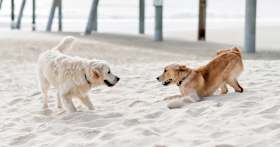
Breed Info
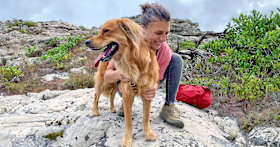
Breed Info
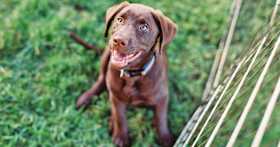
Adoption Advice
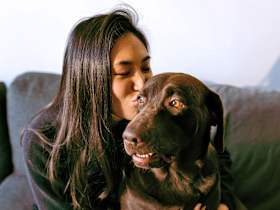
Behavior & Training

Breed Info
A breakdown of the most common doodles — and how to find the right one for your lifestyle.

Breed Info
These cute mixes showcase a lovable blend of breeds, offering endless charm and personality.
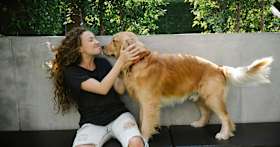
Behavior & Training
Here’s what you need to know about the developmental stages of puppy behavior.
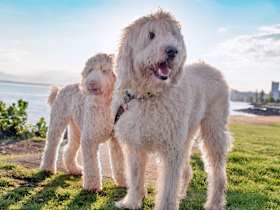
Breed Info
Which Doodle mix is right for you? Here’s everything you need to know about these adorable crossbred companions.
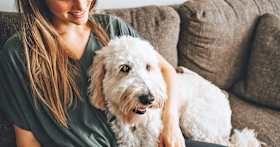
Breed Info
This Retriever-Poodle mix is affectionate and playful. But they also require more attention than you might think.